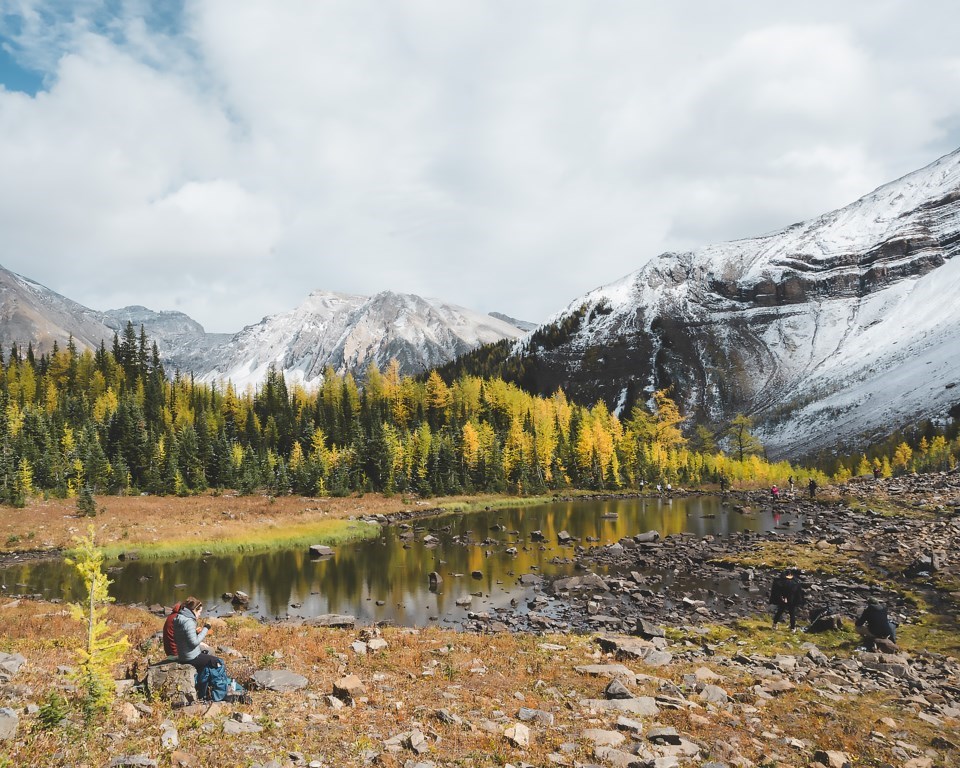Conservation groups are raising concerns about an online survey that will be used to inform strategy on the Alberta government’s nature policy lacks a desire to increase parks and protected areas.
Canadian Parks and Wilderness Society (CPAWS) and Yellowstone to Yukon (Y2Y) Conservation Initiative said the online engagement missed an opportunity to potentially increase nature space in the province.
Tara Russell, program director for CPAWS Northern Alberta, said she was worried creating a nature strategy based on this survey would mostly just highlight ongoing government efforts.
“To be frank, the current activities that we do have going on in the province aren't good enough at this point, and we are seeing this pretty rapid decline in natural conditions and species populations across the province,” Russell said.
She pointed to one question on where the province is making progress in terms of conserving, managing and restoring nature. Among the options were continuing to build Alberta’s network of parks and protected areas as well as advancing relationships with Indigenous communities and organizations.
She noted the survey didn’t ask if these items should be incorporated into a nature strategy and should have focused more on them.
“There are lots of good things in the survey, and I do hope people fill it out, but there does seem to be this emphasis on managing a working landscape, and we know that working landscape is not sufficient for what we currently are facing,” she said.
Russell hoped the province would listen to feedback, particularly since 77 per cent of Albertans supported increasing protected areas to prevent further decline of wildlife populations, according to 2022 polling commissioned by CPAWS Northern and Southern Alberta chapters.
“I am glad that they're engaging because I hope that the results that come from this engagement reflect the results we've seen in so many past polling activities or public engagements,” she said.
Sarah Palmer, government relations and policy strategist with Y2Y, said the survey was a positive first step to developing a nature strategy but noted there wasn’t much reference to creating new protected areas.
“I think it's really important that we see an opportunity to develop new protected areas and ensure those are connected, and that, in turn, would provide increased access to nature so people can recreate,” Palmer said.
She said they also wanted to know what the next steps would be for the nature strategy following the survey and what a long-term strategy would look like as Alberta’s population continues to grow. She emphasized the need to protect areas such as the eastern slopes of the Rocky Mountains, which was a water source for millions of people.
“This is the most intact mountain region in the world, and so we're hoping to see a nature strategy that works towards keeping it that way,” Palmer said.
A group of 10 environmental and conservation organizations such as CPAWS, Nature Alberta, Alberta Wilderness Association and Alberta Native Plant Council released a report – A Collaborative Vision for Alberta's Nature Strategy – which puts forward six key pathways that the government should adopt to protect nature in Alberta.
Among the six are sustainable economic opportunities, Indigenous-led conservation and expanding parks and protected areas.
“Our collective voice champions a future where biodiversity flourishes, ecosystems become more intact, and that will benefit future generations,” stated the report that was released in October. “A nature strategy can only be successful if it commits to ambitious actions to strengthen nature protection and restoration to halt and reverse biodiversity loss.
“Current land management actions have not been sufficient. By working together – across sectors, governments, and communities – Alberta can take its place as a leader in addressing the global biodiversity crisis.”
Alberta Environment and Protected Areas press secretary Ryan Fournier said the nature strategy would “help continue our proud environmental legacy while also keeping people working.”
“We encourage anyone interested to complete the survey,” Fournier said in an email. “We will review all the feedback and keep Albertans updated as this important work unfolds.”
Fournier said more than 150 stakeholders and Indigenous community members recently provided input, and the online survey is open to the public until Nov. 7.
Sarah Elmeligi, MLA for Banff-Kananaskis and Alberta NDP critic for environment, said the rationale behind the public consultation and developing a nature strategy was unclear and accused the survey questions of being “useless” and too simplistic.
“I can't look at this and take it with any kind of seriousness,” Elmeligi said. “I don't see how it will generate any kind of useful data, I don't know why we're talking about a nature strategy in the first place and so I'm actually kind of confused,” Elmeligi said. “This, to me, looks like just another example of the government wasting money on something that will end up being totally useless.”
Elmeligi questioned how a nature strategy would benefit Albertans, noting her community and other stakeholders were more interested in having an Alberta Energy Regulator that properly enforced existing regulations and a government that would make hard decisions about what activities should be allowed on the landscape, especially the eastern slopes.
“I think part of why I'm struggling with this nature strategy is that it really reads as if the government wants to get credit for the work that is already happening,” she said. “But really, we are in a climate crisis and a biodiversity crisis globally, so doing the status quo and just getting credit for it is not how we actually work towards solutions.”




